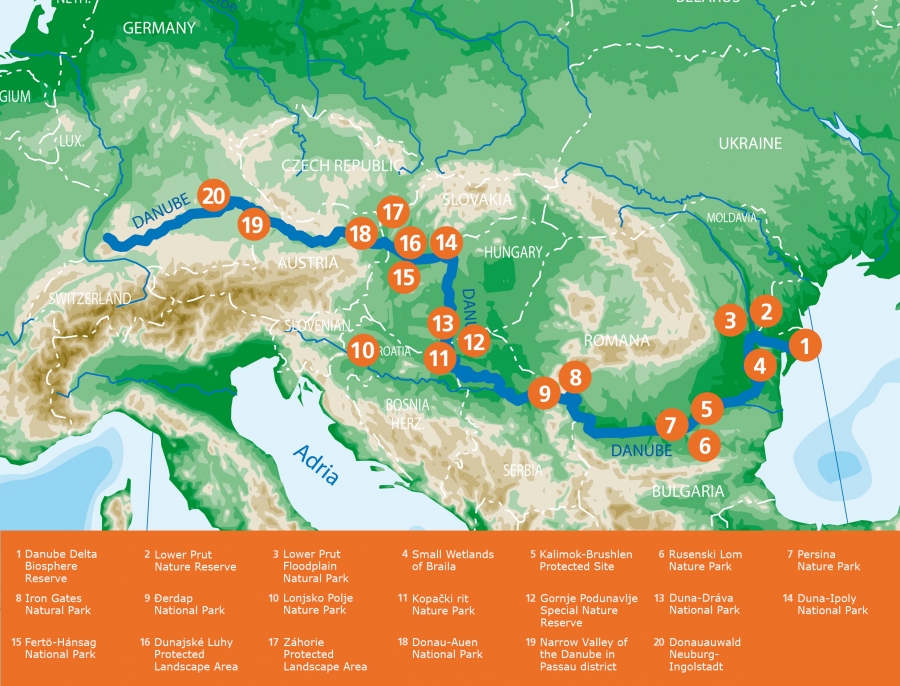It was in 2007 that the Danube River protected areas first stressed the importance of Danube-wide cooperation. The fall of the Iron Curtain and the extension of the European Union around the same time had changed the political map of South East Europe. The door was open for international cooperation; at the same time the dynamic development of the economy in that region and the increasing pressure on the natural treasure of the Danube created a desperate need for shoulder to shoulder cooperation in the field of conservation.
In a statement of intent the setting up of a network of the Danube River Protected Areas was expressed as a common goal: for the development and implementation of a Danube-wide strategy of conservation, to establish a Danube-wide voice for conservation, but also to strengthen each individual protected area through transnational exchanges of experience. In this construction phase, the Danube River Protected Areas was already drawing benefit from the experience of ALPARC: there were motivating discussions and experiences were exchanged about the challenges raised by transnational cooperation.
In 2009 DANUBEPARKS was officially established. Today the network includes 20 protected areas in almost every country along the Danube (Romania, Moldova, Bulgaria, Serbia, Croatia, Hungary, Slovakia, Austria and Germany). Danube-wide projects in the fields of riverside woodland management, fluvial dynamics, river restoration, species protection and nature tourism were implemented and made DANUBEPARKS a “flagship project” of the EU Danube region strategy. DANUBEPARKS sees as its next priority the strengthening of the Danube as a habitat corridor. Here again it is useful to look at the Alpine region ; after all, the network of Alpine protected areas have an examplary project in ECONNECT.
The exchange of experiences with ALPARC has also influenced an important structural decision in the Danube River Network of Protected Areas: In 2014 the DANUBEPARKS Association was set up and so the groundwork was laid for a long-term active role in the Danube region. The setting up of a network, support during the successful implementation of EU projects through project partnership, strategy development in areas such as green corridors or wilderness , exchange on the strategic orientation of protected areas networks and the mutual reinforcement within the framework of macro-regional strategies in the EU are only a few examples of how inspiring the cooperation between the network of protected areas in the Alpine region (ALPARC) and the Danube region (DANUBEPARKS) can be.
DANUBEPARKS is grateful for this both friendly and constructive cooperation and looks forward to facing future challenges together!
Georg Frank
DANUBEPARKS General Secretary



